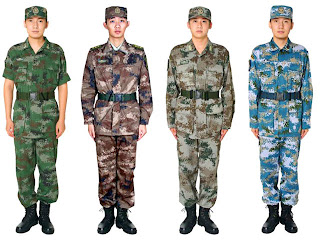- So I decided to sidestep the whole Navy-Air Force debate in space ranks. Now, my Peacekeepers have ranks based on the Chinese or Imperial Japanese systems (in East Asian languages, all branches of service have the same ranks, just with "air", "sea", "land" at the beginning). So now, the ranks look like this (top to bottom):
PK RankEquivalent Chief General Officer General/Admiral Senior General Officer Lieutenant General/Vice Admiral General Officer Major General/Rear Admiral, Upper Half Junior General Officer Brigadier General/Rear Admiral, Lower Half Senior Field Officer Colonel/Captain Field Officer Lieutenant Colonel/Commander Junior Field Officer Major/Lieutenant Commander Senior Company Officer Captain/Lieutenant Company Officer First Lieutenant/Lieutenant Junior Grade Junior Company Officer Second Lieutenant/Ensign Chief Sub-Officer Sergeant Major/Chief Petty Officer Senior Sub-Officer Senior Sergeant/Petty Officer First Class Sub-Officer Sergeant/Petty Officer Second Class Junior Sub-Officer Junior Sergeant/Petty Officer Third Class Senior Private Senior Private/Seaman First Class Private Private/Seaman
Yeah, notice, the enlisted ranks are basically those of the Russian military. That's also where the insignia come from; the "Chief General Officer" insignia is a single large white star, on a field with a UN-blue border, beneath a UN seal. Basically, this. Enlisted rank insignia other than "Chief Sub-Officer have the letters "PK" on them. Not like this at all. - So I realized, the caseless rounds my humans use would, probably, have as their total length, the "casing" length of their equivalent chambering. So, for instance, their pistol rounds (equivalent to .357 SIG) are 9×22 mm; their rifle rounds (equivalent to 6.8×43 Remington SPC), are, well, 6.8×43...but they actually are 43 mm long, while Remington SPC are 58.8 mm long.
One advantage to these shorter bullets is in helical magazines: their SMG, similar to the Chinese CF-05, has a capacity of 64 rounds to the CF-05's 50. - Remember how I said my felinoids' homeworld has less oxygen in the atmosphere than Earth? I wrote a scene where a member of this quasi-Manichaean cult (rebelling against their empire after centuries in hiding) uses a thermobaric grenade against some of their cops, but its effectiveness is reduced: because the thermobaric grenades are designed for use against humans, and therefore are most effective in environments nearer to human standard oxygenation.
Live by the rich oxygen content, die by the rich oxygen content, you monkeys. - Similarly, so I was thinking, my felinoids are a lot stronger than a human—basically somewhere between a leopard and a jaguar in strength. A jaguar is strong enough to hold a horse in its mouth and jump over a six-foot fence. Now, part of my aliens' strength comes from the fact their atmosphere is thinner (hence they've evolved bird-style air sacs), and their gravity is higher (10.59 m/s2, or 1.08 gs), but there's another factor.
Early humans, and also modern hunter-gatherers, do not actually succeed by hunting prowess. Though they're competent hunters, a human is at a grotesque disadvantage compared to other animals, except in one area. Namely, stamina. We only use 1/5 of our power under normal conditions—adrenaline functions as the limit break, that's why 105-lb women can suddenly lift quarter-ton minivans when you scare them. Anyway, what if the felinoids had, even considering their superior lung-capacity etc., less stamina, because they're using more of their power?
Unfortunately for humans, while greater stamina is a great advantage in drawn-out conflict, conflicts tend not to get drawn out when the other guy can split your skull by slapping it. - Quick addition, about, what, half an hour after I originally put this up? Armor. Armor, armor, armor. It's really funny, read some books about future war written during the 60s; one thing that frequently comes up is this idea that there'll never really be armor again, on the battlefields of the future, except on vehicles. It's the same kind of reductive thinking that led to "We'll never dogfight again" (guess what, we still do).
It'd be real fun to show those guys a photo like, say, this: Yeah, these gents are some manner of Russian Federation soldiers; don't think they're Specnaz but they'd probably beat you up if you assumed there was a difference.
Yeah, these gents are some manner of Russian Federation soldiers; don't think they're Specnaz but they'd probably beat you up if you assumed there was a difference.
It's only a matter of time till we add bracers, shinbaulds, and cuisses to the cuirasses, often spaulders, and sometimes poleins everyone already uses. And yeah, notice, the names are all in Old French. - Speaking of, I think the Peacekeepers in my books use something similar to the People's Liberation Army's current multi-cam pattern, as worn by the second guy from the right in this pic:
 Think it's called Type 07 camo, semi-arid, but it's obviously similar to the multi-cam we use over here. A few countries' Peacekeeper contingents ("national cadres", and yes, the fact that's Soviet terminology is deliberate) will use other patterns; some US Marines still wear good ol' MARPAT. 'Cause, y' know, they're the Marines.
Think it's called Type 07 camo, semi-arid, but it's obviously similar to the multi-cam we use over here. A few countries' Peacekeeper contingents ("national cadres", and yes, the fact that's Soviet terminology is deliberate) will use other patterns; some US Marines still wear good ol' MARPAT. 'Cause, y' know, they're the Marines.
One man's far-from-humble opinions, and philosophical discussions, about pop-culture (mostly geek-flavored i.e. fantasy, science fiction, anime, comics, video games, etc). Expect frequent remarks on the nudity of the Imperial personage—current targets include bad fantasy and the creative bankruptcy of most SF in visual media.
2011/04/11
War Never Changes
Well, 'cept when it does. But, still, that whole "bunch of guys killing each other" aspect of it—probably the most salient feature, I'm guessing—is always the same, so that's probably what it meant. Thoughts upon the military SF aspect of my writing, and mil-SF in general.
Subscribe to:
Post Comments (Atom)
No comments:
Post a Comment